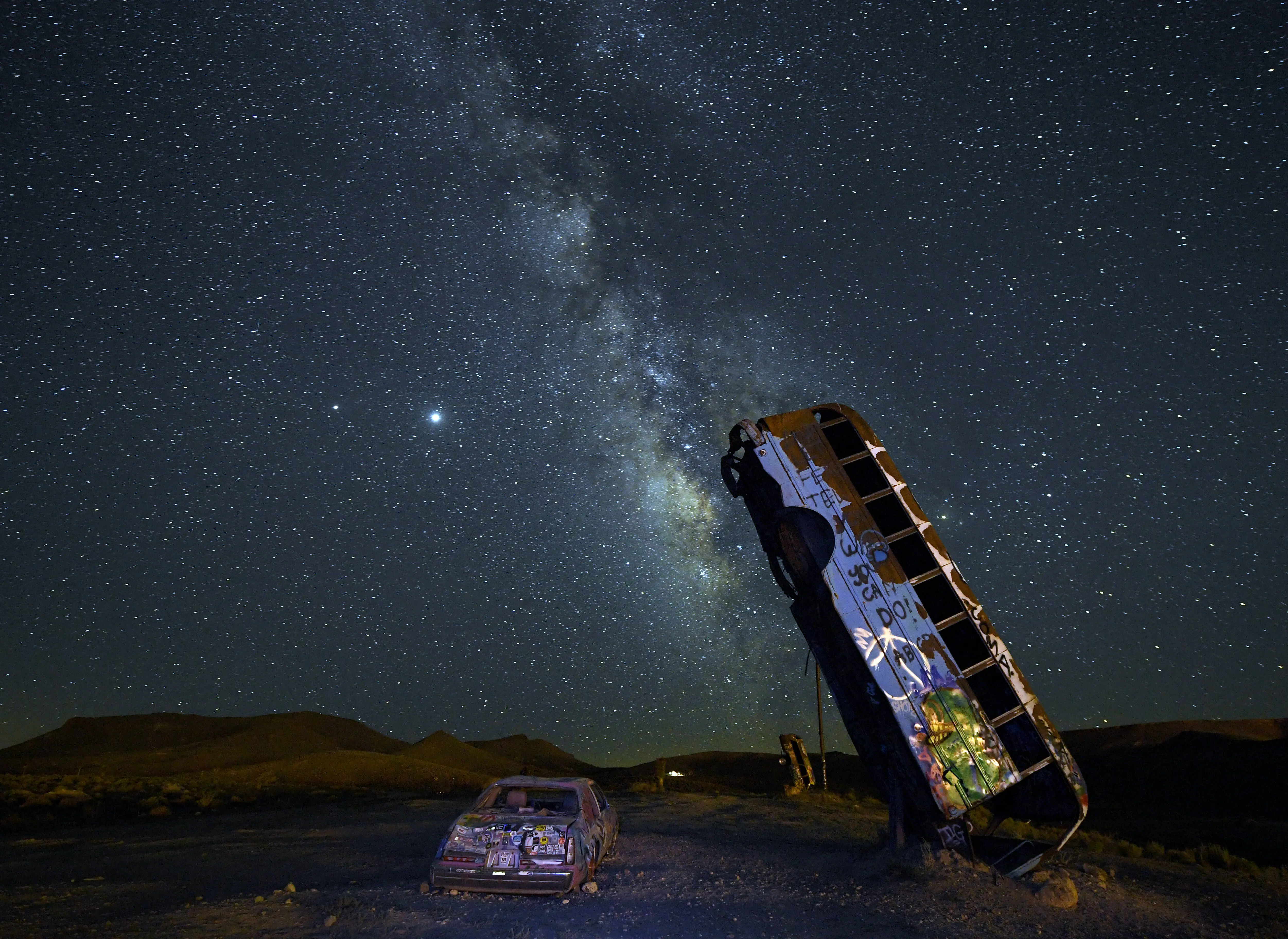3I/Atlas hits perihelion today at about 11:47 UTC, roughly 4:47 am PT, when it passes about 1.36 AU from the Sun between Earth and Mars. From Earth, the geometry is unfavourable during the moment itself because 3I/Atlas sits behind the Sun, so ground telescopes will not catch the turn. Agencies stress there is no hazard. NASA notes its closest Earth approach is about 1.8 AU in December and that 3I/Atlas remains a research target, not a threat.
After perihelion, the spacecraft will continue to observe. ESA has already imaged 3I/Atlas near Mars and says more observations are planned in the weeks ahead. The International Asteroid Warning Network is also running a coordinated astrometry exercise from November 27 to January 27 to refine how observatories track comets.
The scientific watch item is how 3I/Atlas behaves as heating rises. Teams report unusual chemistry, such as bright nickel lines without detectable iron and a CO₂-heavy coma. Harvard’s Avi Loeb frames perihelion as an “acid test,” while most researchers say the data still favour a natural comet.
Perihelion today: timing, distance, visibility in IST and globally
Perihelion occurs around 11:47 UTC on October 29, which is approximately 5:17 p.m. IST and 4:47 am PT. The closest Sun distance is about 1.36 AU. Because 3I/Atlas is near solar conjunction, observers on the ground should not expect live skywatching today. The object will become observable again once it moves away from the Sun’s glare later in November, likely in the pre-dawn hours for many locations.
Contextualizing speed and distance helps set expectations. Around perihelion, 3I/Atlas is moving at roughly 68 km per second. Its closest approach to Earth is about 1.8 AU, near December 19, which is about 270 million kilometers. Those numbers place it firmly outside any risk envelope for our planet.
The immediate post-perihelion track matters for planning. After today’s turn, 3I/Atlas passes about 0.65 AU from Venus on November 3, comes nearest to Earth in mid-December, and will pass Jupiter in March 2026 as it exits the inner solar system. That geometry also explains why the prime visibility window opens after conjunction as 3I/Atlas climbs away from the Sun in the morning sky.
Spacecraft and networks are positioned to capitalize on this window. ESA’s ExoMars orbiter already captured the comet near Mars, and the agency says additional assets, including JUICE, are planning follow-ups. Meanwhile, the International Asteroid Warning Network’s November 27 to Jan. 27 campaign will train observatories on comet astrometry and reinforce that 3I/Atlas is “no threat” while still a high-value target. Those two tracks together make 3I/Atlas nearing the Sun, the key inflexion point for fresh data.
What scientists are seeing: 3I/Atlas chemistry, jets, and why it is “weird, not worrisome”
Spectroscopy stands out. Teams using large telescopes reported strong neutral nickel emission without corresponding iron lines at large solar distances, an unusual ratio that suggests low-temperature nickel-bearing molecules could be breaking apart in sunlight. That is a different pathway than simply vaporizing metallic grains, and it helps explain why 3I/Atlas looks chemically odd.
Space telescopes are adding context. JWST imaging and spectra indicate a CO₂-rich coma with water and carbon monoxide also present. As heating increases after perihelion, models anticipate more activity, jets, and a brighter coma, even if the comet never becomes a naked eye object. Hubble imaging has constrained the size and captured the growing tail structure as activity rose during the inbound leg.
Scientists emphasise that unusual does not equal artificial. As per the People report dated July 30, 2025, Harvard scientist Avi Loeb said,
“We shouldn’t assume anything, and we should assess the risk given the data that we have.”
Colleagues cited by the same report answered that “numerous telescopic observations” show “classical signatures of cometary activity,” a reading that aligns with today’s mainstream posture. The IAWN campaign page explicitly frames 3I/Atlas as a training opportunity and reiterates the “no threat” status.
The debate: Harvard’s Avi Loeb on the “acid test” vs the mainstream view
A focused debate is unfolding about how to interpret perihelion. As per a Medium post dated October 25, 2025, Avi Loeb stated,
“Our paper explores the possibility that the recently discovered interstellar object, 3I/ATLAS, may provide evidence in support of the dark forest hypothesis.”
He further wrote,
"This new interstellar interloper has displayed a number of anomalous characteristics."
In a separate Medium essay about the solar conjunction, he argues that today is when any artificial manoeuvring would be most revealing. This is why some commentators refer to perihelion as an “acid test” for 3I/Atlas. NASA’s small bodies lead scientist pushed back on the engineered artefact angle in plain terms. As per The Guardian report dated September 11, 2025, Tom Statler said,
“It looks like a comet. It does comet things.”
In the same story, he stated,
“the evidence is overwhelmingly pointing to this object being a natural body.”
That consensus frames how most agencies are treating today’s milestone.
Stay tuned for more updates.
 GOLDFIELD, NEVADA - JULY 18: The Milky Way galaxy is seen from the International Car Forest of the Last Church on July 19, 2020 in Goldfield, Nevada. The Car Forest is an outdoor art installation of junk vehicles planted in the ground vertically. (Photo by Ethan Miller/Getty Images)
GOLDFIELD, NEVADA - JULY 18: The Milky Way galaxy is seen from the International Car Forest of the Last Church on July 19, 2020 in Goldfield, Nevada. The Car Forest is an outdoor art installation of junk vehicles planted in the ground vertically. (Photo by Ethan Miller/Getty Images)